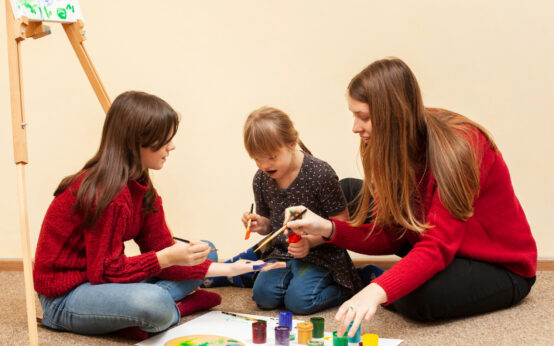Introduction
Navigating the conversation about an autism diagnosis with your child is a delicate yet empowering journey. Communicating this information thoughtfully can foster your child’s self-awareness and resilience, preventing negative self-perceptions. Understanding that children naturally compare themselves to peers, it becomes crucial to share this information in a way that enhances their self-esteem and confidence. This article provides guidelines on how to tell autistic children ‘the talk’ with your child, emphasizing the importance of age-appropriate information, strategic timing, positive framing of differences, and ongoing communication.
Assessing Readiness and Personal Relevance
Deciding when to share the diagnosis depends on your child’s personality, abilities, and social awareness. Early disclosure is recommended to prevent negative experiences from shaping their self-image. When initiating the conversation, focus on personally relevant aspects of autism, ensuring that the information aligns with your child’s experiences. By tailoring the discussion to your child’s unique strengths and challenges, you help them relate to their diagnosis, creating a foundation for self-understanding.

Choosing an Appropriate Time and Place
Selecting an ideal time and setting for ‘the talk’ is crucial for effective communication. Opt for moments when both you and your child are calm and content, minimizing potential anxiety. Ensure an uninterrupted environment, allowing ample time for questions and reflection. A comfortable setting promotes a positive reception, making it easier for your child to process the new information about their diagnosis.

I perceive the term ‘autistic’ as a descriptor for a facet of how my brain functions, rather than confining myself to a narrow set of behaviors or conforming to stereotypical boundaries.
Amanda Baggs
Focusing on Strengths and Differences
Approach the conversation by highlighting the strengths and differences within your child’s family and friends. Emphasize that everyone possesses unique qualities, framing differences as positive attributes. Discuss your child’s strengths and challenges, introducing the term ‘autism’ as a descriptor for this specific combination. Reinforce that autism does not define their worth and that everyone, regardless of differences, contributes valuable qualities to the world.

Keeping the Conversation Open
Encourage ongoing dialogue by conveying to your child that discussing autism is welcome at any time. Recognize that processing this information takes time, and your child may have questions or concerns that arise gradually. Regular check-ins provide opportunities for your child to share their thoughts and feelings about their diagnosis. Additionally, seek incidental opportunities to introduce the topic, such as sharing relevant videos or reading books that explore life with autism.

Conclusion
Initiating a conversation about autism with your child is a significant step in fostering self-awareness and understanding. By following these guidelines, you create a supportive environment where your child can embrace their unique qualities confidently. Remember that this journey is not solitary, and seeking support from other parents and professionals can provide valuable insights. As your child grows and encounters new experiences, maintaining an open line of communication ensures ongoing understanding and empowerment. Together, you and your child can navigate the intricacies of autism with resilience, fostering a positive self-image and contributing to a community that celebrates diversity.
Source
- Smith, J. (2024, February 28). Navigating the Conversation: How to Tell Autistic Children About Their Diagnosis. Parenting Today.
- Baggs, A. (n.d.). I perceive the term ‘autistic’ as a descriptor for a facet of how my brain functions, rather than confining myself to a narrow set of behaviors or conforming to stereotypical boundaries.







